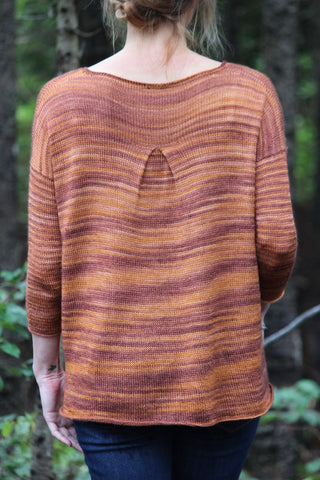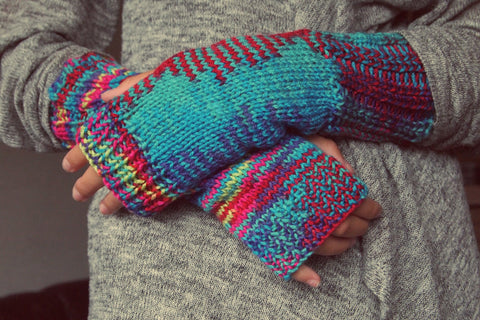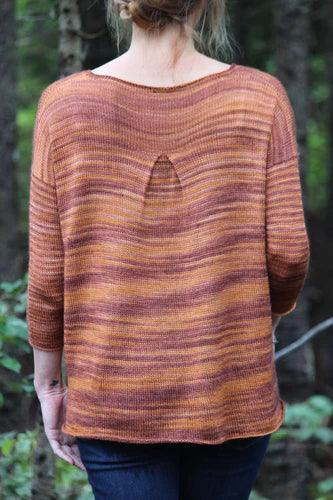Knitting with artisanal yarns requires certain knowledge. First of all you need to know how to wash hand-dyed yarns and you will find a very detailed article on this subject by clicking HERE.
Once the issue of care is covered, let's talk about what is commonly known in knitting language as "POOLING".
First of all, what is pooling?
The term "pooling" is used when the colors of a semi-solid, speckled or variegated yarn all come together in the same place in a knitted fabric. It is easier to illustrate this concept in a picture with a variegated yarn :

Here is a perfect example of "pooling". The Grounded pattern you see above has been knitted with a two-tone skein (chocolate and moss green). In one part of this knit, at the waist, you can see chocolate and moss green "pooling" appearing, a bit like a liquid where water and oil refuse to blend.
Why is this? Because the combination of "number of stitches and yarn colors" at that particular spot made the chocolate color arrive at the same place on several rows in a row and the moss green followed the rhythm!
And don't think that the pooling effect occurs only in multi-colored yarns, you can see it in knits with semi solid colors as well as in the Autumn Breeze pattern.

"To pool or not to pool"... That is the question!
Some people don't like pooling at all and will do anything to avoid it while others like the effect of pooling so much that some dyers and yarn manufacturers will intentionally dye the yarn to produce this effect.

When well mastered, pooling can be very interesting and add a "wow" effect to some projects, but in other cases it can be annoying and produce an undesired result.
How to minimise pooling?
The best method to minimize pooling is to alternate the skeins (or balls of yarn) every other row if you knit back and forth or every round if you knit in the round. Not only will this way of knitting reduce the "pooling" effect, but it will also ease the transition from one skein to another.
Because even when they come from the same dye lot, artisanal yarn skeins are slightly different from each other: the end of one skein does not necessarily correspond to the exact color of the beginning of the next skein. So to avoid a demarcation in your project, alternating the skeins is the best solution.
Personally, when I knit sweaters I ALWAYS alternate the skeins between them from the beginning to the end. This method allows me to obtain a homogeneous result while preserving the hand-dyed yarns' unique and artisanal look. It's an easy habit to take and after a while it becomes natural!
And if alternating the hanks is not possible?
If you have only one skein for example, you could always alternate using the beginning and the end of the same ball, but if the idea is completely repugnant to you, there is still hope:
- Whenever possible, change the way you knit: if you work in the round, try to knit back and forth or vice versa.
- Sometimes, a slight modification to the gauge can make things better: try with a needle half a size smaller or larger.
- Change the knitting stitch pattern: replace the jersey with a seed stitch for example.
- Adding or removing a few stitches could also make enough difference to break the pooling.

